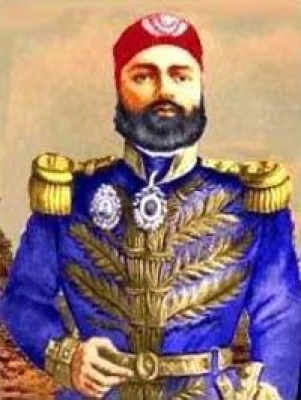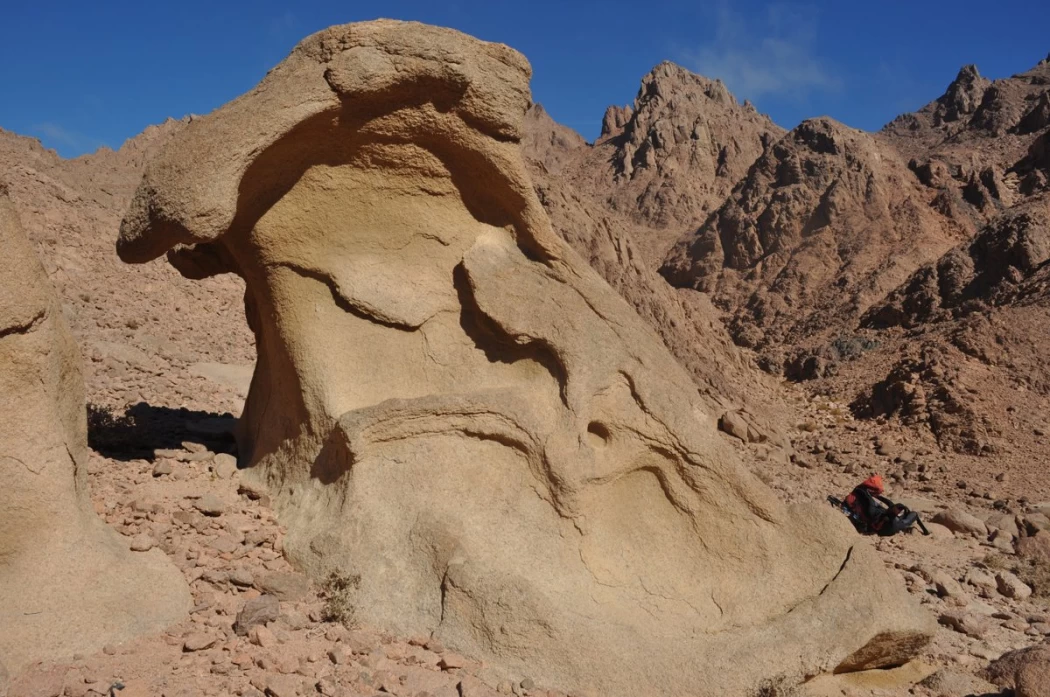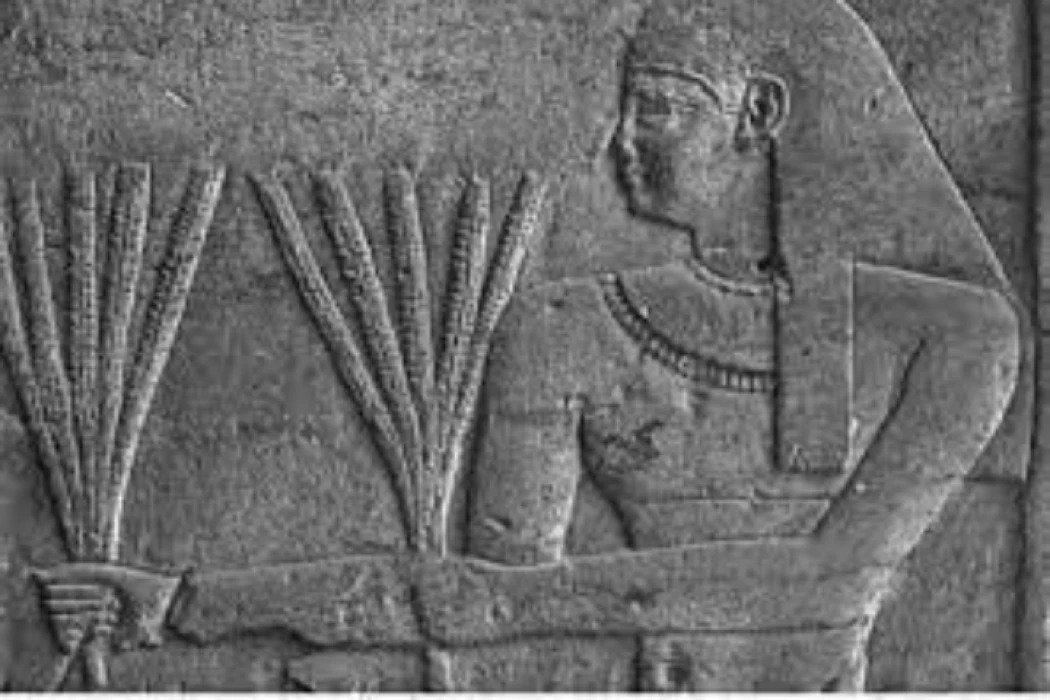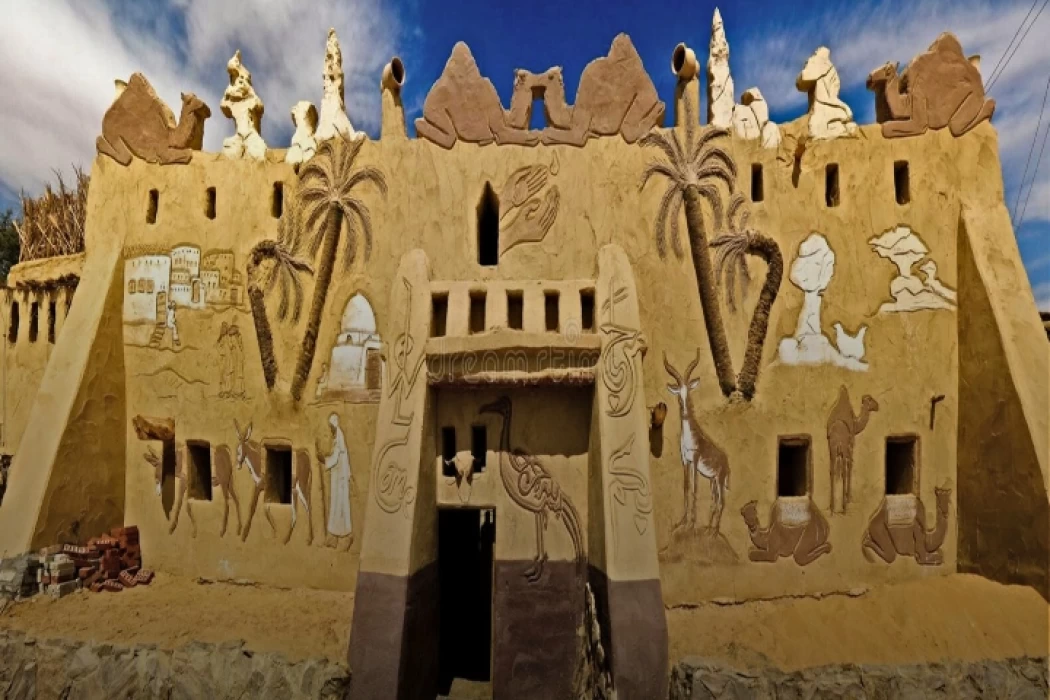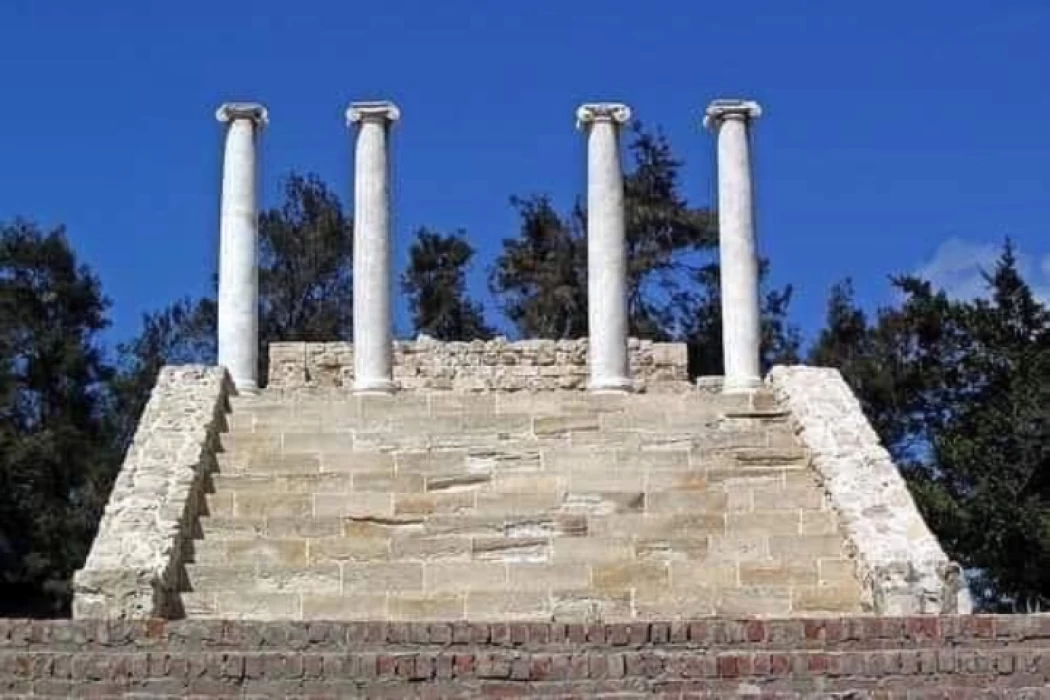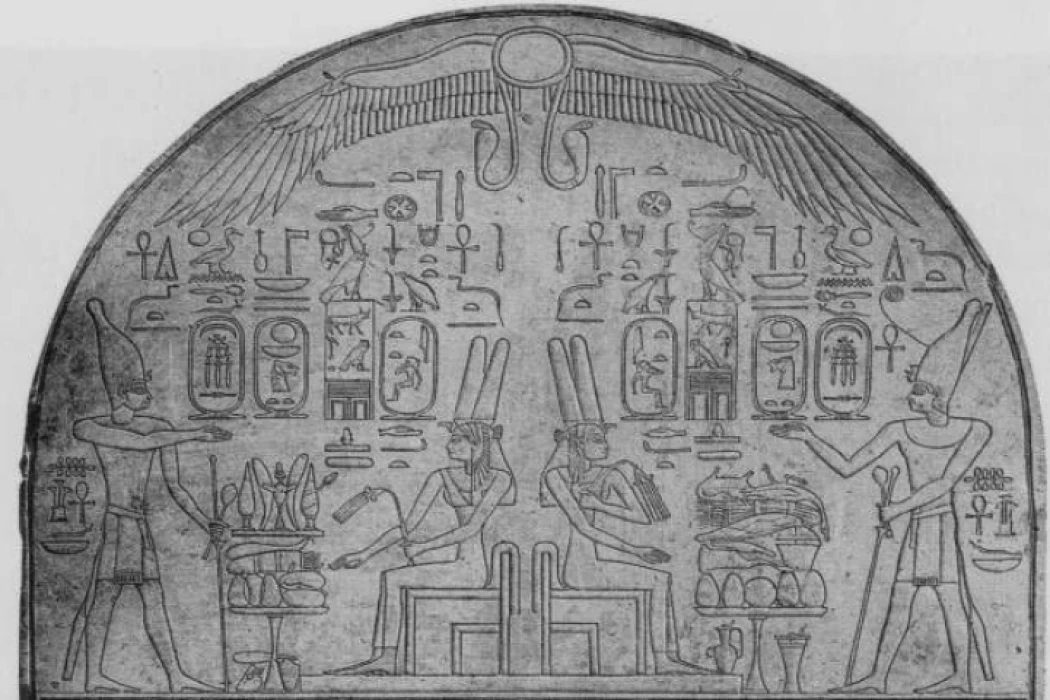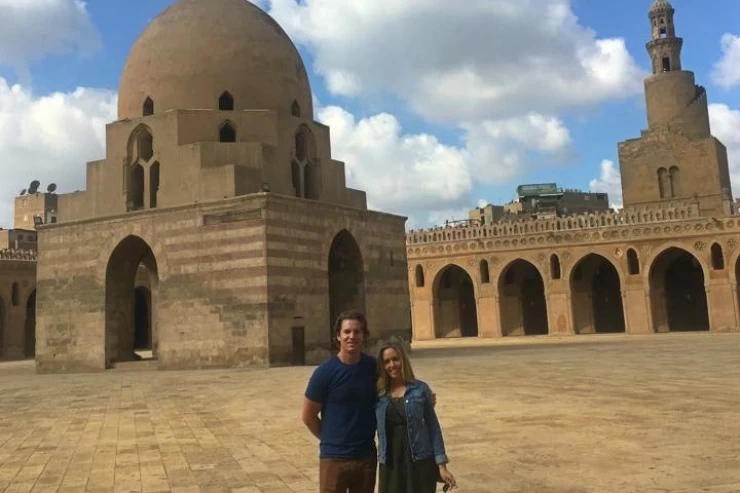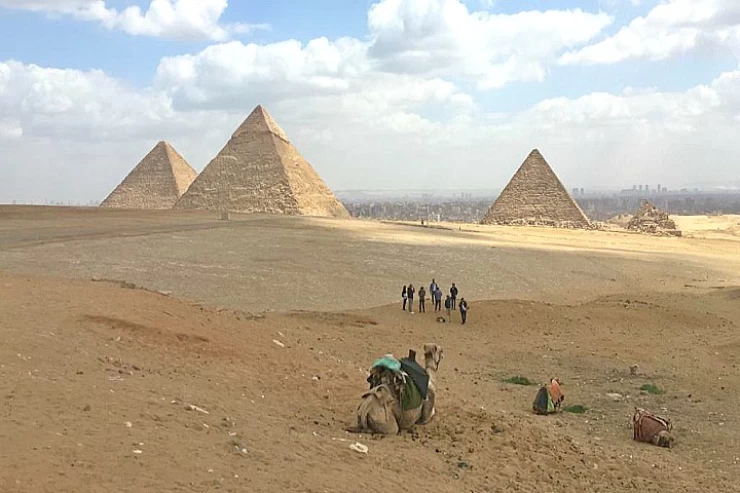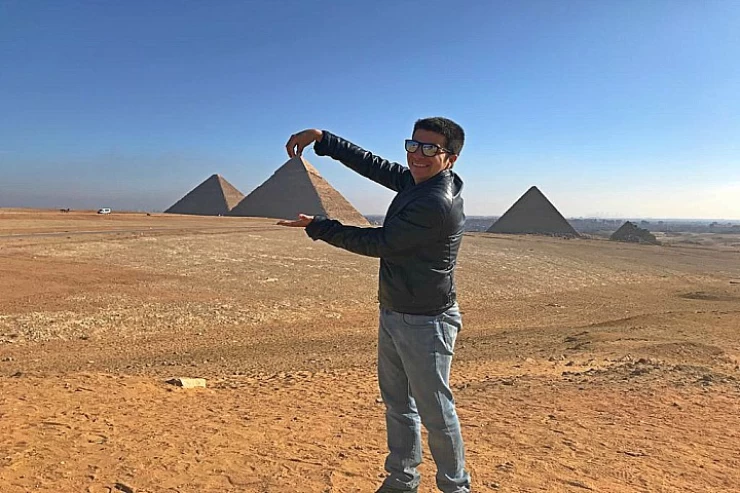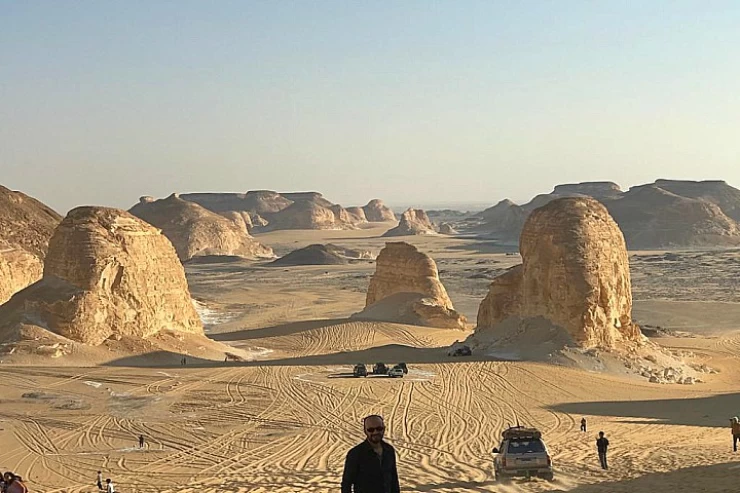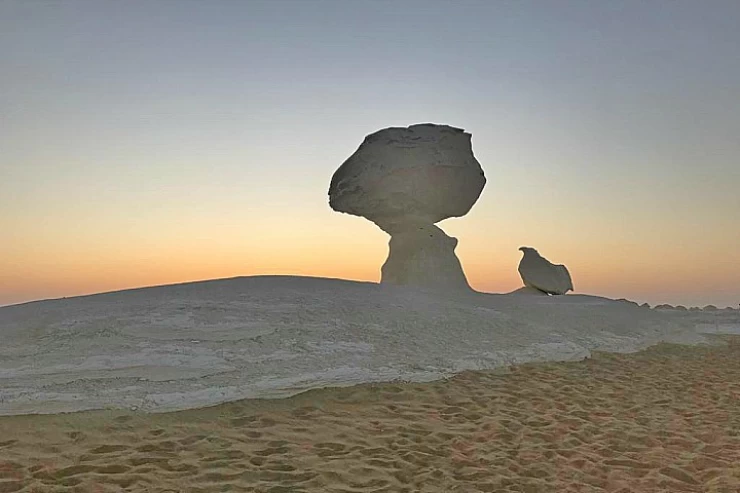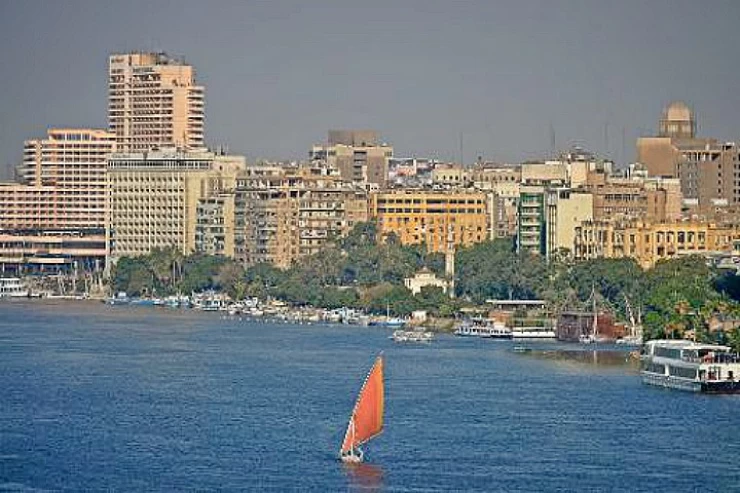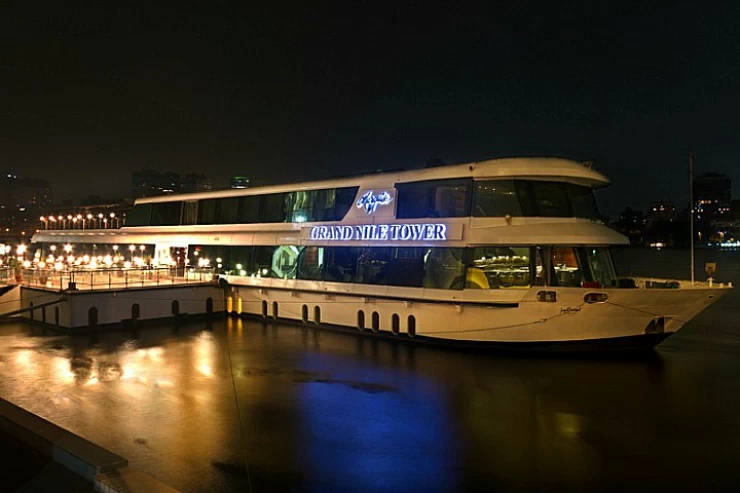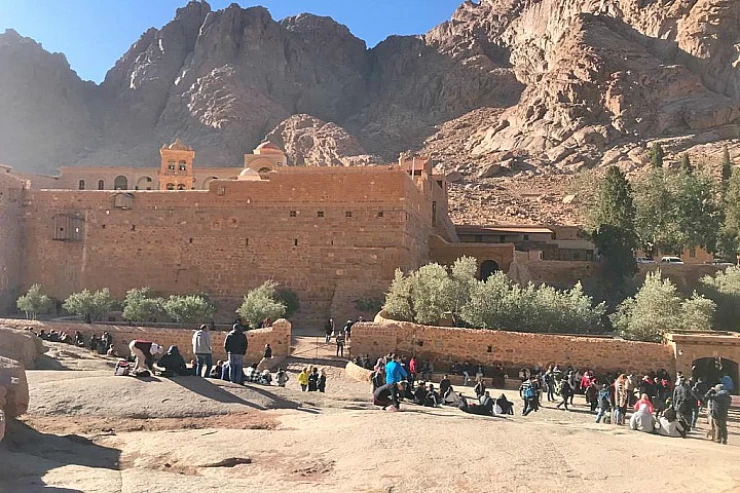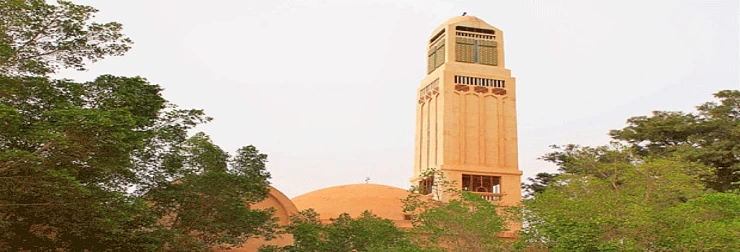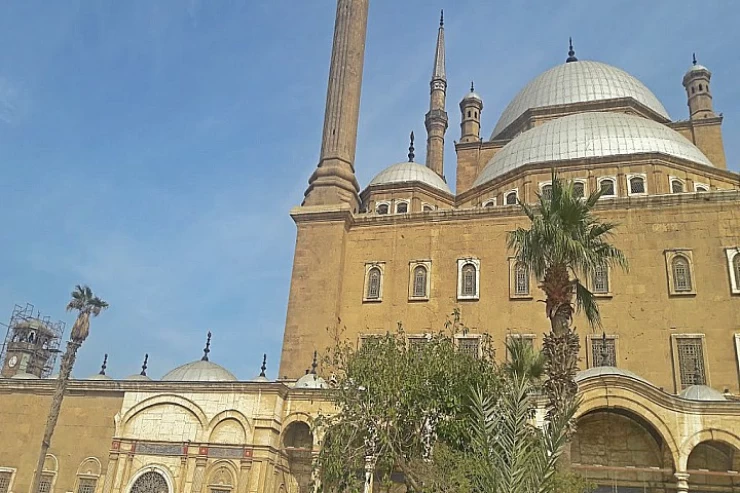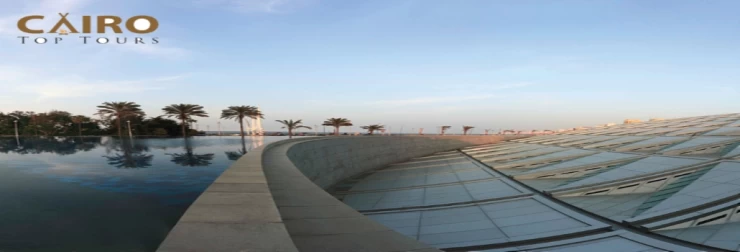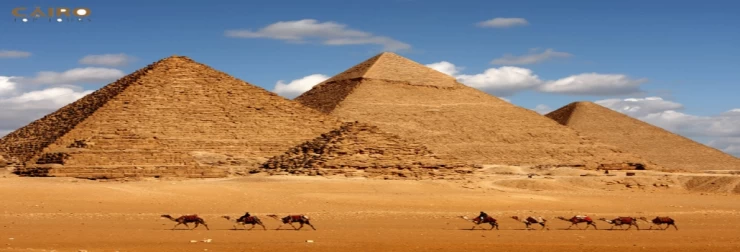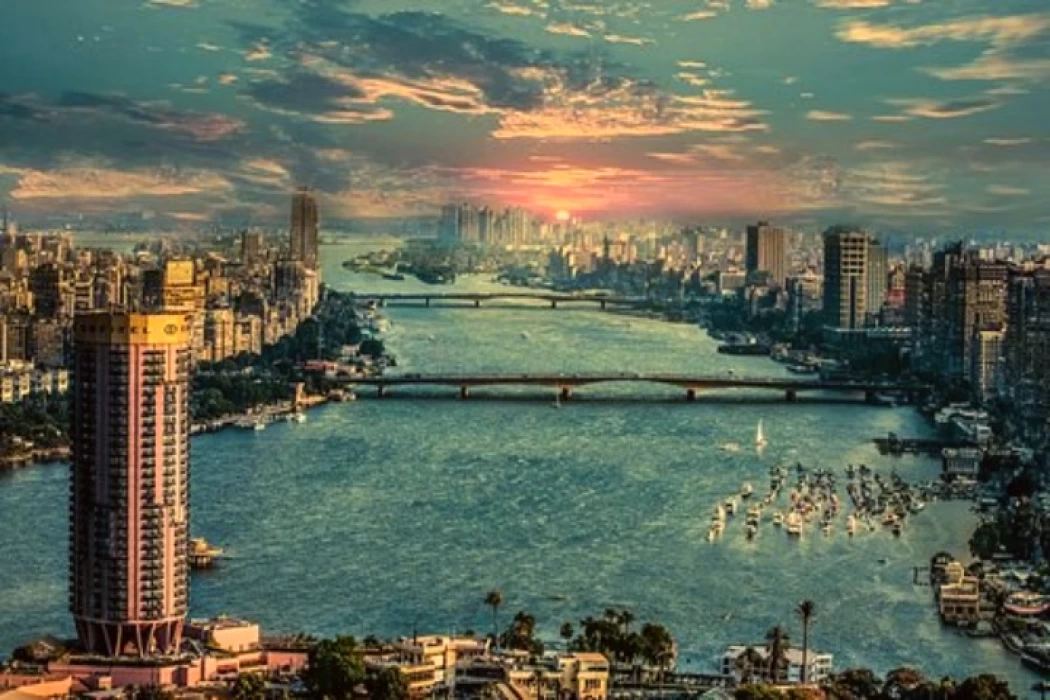
History Of Cairo Governorate
Cairo is the capital of the Arab Republic of Egypt and its largest and most important city, and it is the largest Arab city in terms of population and area, and occupies the second place in Africa and the seventeenth globally in terms of population, and it is also part of the largest urban agglomeration in Africa, the Arab world and the Middle East. The Greater Cairo area is the twelfth most populous in the world with a population of 21,322,750 million people according to statistics in 2021. They represent 20% of the total population of Egypt (more than 107 million people).
The city of Cairo is one of the most culturally diverse and civilized cities, as it has witnessed many different historical epochs throughout the ages, and there are many ancient and modern monuments in it, so it has become an open museum that includes pharaonic, Greek, Roman, Coptic and Islamic monuments. The history of the city dates back to the origin of the Pharaonic city of AON or Heliopolis "Ain Shams currently", which is one of the oldest cities in the ancient world. As for Cairo in its current form, the history of its establishment dates back to the Islamic conquest of Egypt by Amr ibn al-as in 641 ad and the establishment of the city of Fustat, then the Abbasids established the city of Askar, Ahmed Ibn Tulun built the city of Al-Qata'a, and with the Fatimids entering Egypt from ifriqiya (present-day Tunisia), the commander Jawhar Al-saqli began to build the new capital of the Fatimid state by order of the Fatimid caliph Al-Mu'izz in 969 ad, and the Caliph named it "Cairo". Cairo has been called - throughout the ages, it is the city of a thousand minarets, guarded Egypt and Cairo El Moiz. During the Islamic era, Cairo witnessed the finest architecture, represented by the construction of castles, forts, walls, schools, and mosques, which gave it an aesthetic profile that still exists in its ancient neighborhoods today.
Cairo is a governorate and a city, that is, it is a governorate that occupies the entire area of one city, and at the same time a large city that forms a governorate of its own, and is divided into 37 neighborhoods, Cairo celebrates its national day on July 6 of each year, the day that coincides with the laying of the foundation stone of the city in 969 ad, so Cairo is now more than 1055 years old.
Cairo is also the headquarters of many regional and international organizations, where the headquarters of the League of Arab States, the Regional Office of the World Health Organization, the Food and Agriculture Organization, the International Civil Aviation Organization, the International Telecommunication Union, the United Nations Population Fund, the United Nations women, the headquarters of the United Nations Development Program, the office for the Coordination of humanitarian affairs of the United Nations, as well as the headquarters of the African Basketball Federation are located.
Naming,
It was said that Jawhar Al-saqli first named the city AL-mansuriyya after the name of the city of Al-mansuriyya, which was established outside Kairouan by al-Mansur by Allah, al-mu'izz's father for the religion of Allah, or after the name of Al-Mu'izz's father himself in memory of him, and this name continued until al-mu'izz came to Egypt and called it "Cairo", four years after its foundation, optimistic that it would conquer the Abbasid state rival to the Fatimids, and it was said that he called it Cairo to conquer the world, or the omnipotent planet is Mars. The city of Cairo has several famous names, including Egypt El Mahroussa, and Cairo El Moiz, the city of a thousand minarets, the jewel of the East.
History,
Cairo gained its status and influence on various civilizations thanks to its strategic location, which was chosen for it by the people of Egypt since the dawn of civilization, and distinguished from the rest of the historical capitals as a continuation, its development formed a series of episodes that began with the city of Aon in the pre-dynastic era, which served as the religious capital after the unification of the country and the beginning of the dynastic era by King Mina, while MANF was the first administrative and political capital of Egypt after the stability of unity. Aon was later known by the Greek name Heliopolis or currently Ain Shams. After the Islamic conquest of Egypt in 18 Ah/639 AD, Amr ibn al-As Built the city of Fustat in 21 Ah/641 AD and built a mosque known by his name, and then the places of residence of the Arab tribes were chosen. After the establishment of the Abbasid state and the elimination of the Umayyad state, the Abbasids established the city of Al-Askar in a place known as Al-Hamra Al-Aqsa, located northeast of Fustat, where they established their houses and residences, and Salih ibn Ali built the emirate House and the AL-Jund barracks, and then al-Fadl Ibn Saleh built the Al-Askar mosque, and over the days the military contacted Fustat and became a large city where roads were planned and mosques and markets were built. Until Ahmad Ibn Tulun took over the rule of Egypt and saw that the city of Al-Askar could not accommodate his entourage and recruited him, so he climbed to mount Mokattam and saw a space land between the Askar and Al-Mokattam, so he took in place his new city, which was named Al-qataa. Almost a hundred years after the establishment of the Qata'a, the Fatimids entered Egypt under the leadership of Jawhar Al-saqli, sent by caliph Al-Mu'izz ad-Din Allah, and he began to lay the foundation of "Cairo" northeast of the Qata'a, and also laid the foundation of the Fatimid Grand Palace, and proceeded next to it to build the Al-Azhar mosque.
Ancient times,
The ancient city of Aon, currently located in the Matariya region and Ain Shams, was one of the most prominent centers of ancient Egyptian culture and was mentioned in the ancient Egyptian text with the names "Uno horizon of the sky" and"ANO sky of Egypt" and was considered the seat of the chosen gods and the birthplace of each idol, and the city was named in Coptic "Uno", and in Greek "Heliopolis" meaning the city of the sun. The city had a political past, as it is considered one of the oldest capitals of the United Egypt at the dawn of history, as a result of the efforts of its leaders, who established the first unity of the two sides, which preceded the unity that was carried out by King MENA. He ensured the city its fame in philosophy and religion and introduced its doctrine in explaining the genesis of existence. As for Astronomy, the city's fame is due to the invention of the solar calendar, which was distinguished by the Egyptian civilization. Although the city of Aon did not play a prominent political role in historical times, it still retained its cultural, civilizational, and religious status, and the Kings were keen to leave their traces there throughout the ages, recent excavations have resulted in many monuments that indicate this, including the upper part of a small obelisk of sandstone dating back to the reign of King Teti of the Old Kingdom. Among the monuments of the Middle Kingdom era are a red granite obelisk erected by King Senusret I, The Remains of an obelisk of Pharaoh Thutmose III, several limestone stelae, and part of an antique statue. Among the monuments of the New Kingdom era are a flexible colonnade located in the area of the temples, a limestone statue of King Seti II, The Remains of a temple of King Ramses III, several column crowns, and fragments of columns and statues of sphinxes.
Babylon,
The city of Babylon is located in the Coptic region of Cairo today, and was created by Ramses II and took its name from the prisoners of the Babylonians who rebelled against him, so he built the castle in which he arrested them, and then the name was given to the whole city. The city became famous in Roman times during the reign of Emperor Augustus, and Emperor Trajan ordered its reconstruction in 130 BC. The fortress was restored and expanded by the Roman Emperor Arcadius in the 4th century AD and turned into a military City. Stones taken from Pharaonic temples and completed with red bricks were used in the construction of the Fort. Currently, only the tribal door, which is surrounded by two large towers, remains of the Fort buildings. the Hanging Church was built on top of one of the towers. the Roman Orthodox Church of St. George was also built on top of the other tower. on the rest of the wall were built the Church of St. Abu Sarja, the Church of the Virgin, the Basil Palace, the monastery of St. George for nuns, the Church of St. Barbara, and a synagogue for Jews. The Roman fort is known as the Wax Palace or Babylonian fortress and has an area of about half a square kilometer, inside of which the Coptic Museum is located. In the year 641 ad, the fort fell to Amr ibn al-as after a siege that lasted about seven months on 18 Rabi al-akhir 20 AH/April 16, 641 ad, and its fall marked the entry of Islam in Egypt. Amr ibn al-As chose a strategic place north of the Babylonian fortress and established the city of Fustat inside it the Babylonian fortress, a city for the Arab soldiers
The Middle Ages,
Al-Fustat,
Fustat took its name from the tent of Amr ibn al-as, which he erected in the center of his camp, and Amr ibn al-as established it north of the Babylonian fortress, and ordered to plan it to be the first capital of Islam in Egypt instead of Alexandria, and in the center of the city he erected a mosque for prayer named after him and famous for its four lighthouses, and Al-maafri publisher. Fustat was famous for its paved streets, spacious houses with water fountains and indoor gardens, and the city had many markets, most of which were located on the shore of the Nile River, unlike the markets around the mosque. The choice of the location of the city was distinguished by the ease of defending it for natural reasons, as it is bordered by the Nile to the West and Mount Mokattam to the East, which formed a natural barrier against any external aggression
Al Askaar,
Al-Askar is the second Islamic capital in Egypt, and the Abbasids established it in a place known as Al-Hamra Al-Aqsa located northeast of Fustat, where they established their houses and residences, and Saleh ibn Ali built the emirate House and the barracks of the soldiers or Dar Al-Askar, from which the city took its name, and then Al-Askar mosque was built by al-Fadl Ibn Saleh. The city is considered an extension of the planning and urban trends of the city of Fustat, and architecture glorified it, houses and palaces were built and expanded until it joined Fustat, of which Egypt was ruled by 65 governors over 120 years, and its location was likely near the Sayyida Zeinab neighborhood today.
Al Qataa,
Qataa is the city founded by Ahmed Ibn Tulun, thus becoming the third Islamic capital in Egypt, its name is due to its planning system transferred from the city of Samarra, where Ibn Tulun grew up, which is a cross-planning consisting of residential plots, each of which is for a group of residents connected by a single bond, class or level, called the plots. The city was built in the land space between the city of Al-Askar and Mount Mokattam, and its first plans were drawn up in 256 Ah/870 AD.six years later, in 876 AD, Ibn Tulun celebrated the laying of the foundation of the mosque named after him on Mount yashkar, which was completed in two years, located in the center of the city, and is one of the largest mosques in the Islamic world with an area of 26,500 square meters, and was known as the hanging mosque as it ascends to its doors with circular staircases. Ibn Tulun also established the first hospital in Egypt in the AL-Basatin area. Everyone connected with the government or the administration of the country and members of the military moved to the city, and the public was not allowed to live there. Al-Qata'a remained the capital of Egypt during the tulunid rule, which lasted 27 years until the year 293 Ah / 905 AD, with the arrival of the Abbasid army to Egypt, which erased Al-Qata'a and turned it into ruins while retaining the mosque, and the city of Al-Askar returned as a seat of government until the Fatimids entered.
Qahira Al-Mu'izz,
Almost a hundred years after the establishment of the Qata'a, the Fatimid Army from Morocco, led by Jawhar Al-saqli, was presented to Egypt by caliph Al-Mu'izz ad-Din Allah, and arrived in Fustat on 11 Shaaban 358 Ah/July 969 ad, and entered it the next day, and landed with his soldiers in the void located northeast of the Qata'a and began laying the foundation of the new Fatimid base on 17 Shaaban 385 Ah/July 7, 969 ad, which he named "Cairo", and also laid the foundation of the grand Fatimid Palace on 18 Shaaban 358 E, and alongside him, the construction of the Al-Azhar mosque began in Jamadi I in 359 Ah/April 970 ad. The city was established on an area of 340 acres, and a square-shaped adobe wall was built around it with a length of each of its northern and southern sides of 1500 cubits, and its eastern and western sides of 1700 cubits, and each side of the wall has two gates, the northern side has Bab al-Nasr and Bab al-Futuh, the eastern side has Bab al-burqiya (al-Gharib) and Al-quratain (Al-Muharraq), the southern one faces AL-Fustat at the gate of creation and has Bab zuweila (Al-mutawali) and Bab Al-Faraj, and the Western one has Bab al-Qantara and Bab Saada. The city began as a military city that included the residences of princes, government offices, and money vaults, and in 973 it became the capital of the Fatimid state when Al-Mu'izz Ladin Allah moved to it from Morocco, and it was called Cairo Al-Mu'izz. After the lapse of 120 years after the founding of Cairo, the Emir of armies Badr al-Jamali, who was the minister of Caliph al-Mustansir by Allah, saw that people built outside the Cairo wall because of the expansion of urbanization, so he surrounded it with a wall that connected it to the wall of Jowhar in 480 Ah/1087 AD and erected a new wall of Adobe and doors of stones.
Ayyubid era,
Sultan Nur ad-Din Mahmud sent an expedition to Egypt to expel the Crusaders led by Asad ad-Din shirkuh, with whom Saladin took his nephew Najm ad-Din Ayyub. After the death of shirkuh, the deputy caliph, Al - ' aadid Saladin, became the minister of Egypt, thus becoming the first man in the state. Then Saladin replaced things and weakened the order of Al - ' aadid, demolished Dar Al-Ma'rifah, built a Shafi'i school, built Dar Al-Ghazl for the monarchy, dismissed the Shia judges, established a Shafi'i judge in Egypt, and established a Shafi'i judge in all the country. Instead of establishing a new capital, Saladin moved to annex the four suburbs of the city (Fustat, Askar, qattaat, and Fatimid Cairo) to be together the capital of the state, so Cairo moved out of the scope of its old walls and its planning extended to the mountain castle, which remained the seat of government of Egypt in various eras after the Ayyubid rule, until the era of Khedive Ismail, who moved the seat of government to the Abdeen Palace. In 569 Ah, Baha Al-Din assigned Qaraqosh to extend a wall around Cairo with its new borders, so he increased the Cairo wall extending from Bab al-Qatara to Bab al-Sha'ariya, and from Bab al-Sha'ariya to Bab al-Bahr, and then increased in the part following Bab al-Nasr to the tower of Al-Zafar and from this tower to the burqa tower and from it to Darb batut and out of Bab al-Wazir to connect to the wall of the mountain fortress. Among the landmarks of that era that remain are the drivers of the eyes of be'er Yusuf and the aqueducts of the waterway that carry water to the fortress.
Mamluk era,
The Mamluk era is considered the Golden Age of Cairo, especially after the crusades in the Levant subsided, and the Mamluks triumphed over the Mongols. During the reign of Al-Zahir Baibars, Cairo extended in the north direction outside its walls in the Husseiniya neighborhood, and a magnificent mosque was built known today as the Al-Zahir Mosque and was formerly called the Safia mosque. Many buildings were also built in Salah al-Din Castle as Dar Al-Dhahab and established markets, bridges, and aqueducts. His princes participated in the construction of many buildings, quarters, Khans, houses, mosques, and baths that added a touch of majesty and beauty to the city.
During the reign of the Qalawun dynasty, which ruled Egypt for almost a hundred years, al-Mansur Qalawun built a range of rare buildings, including the Al-Jalila school and his dome or mausoleum, and established the maristan and made it a waqf for all sects from the king to the slaves, and part of it still exists today. In the days of Sultan an-Nasir Muhammad ibn Qalawun, Cairo extended north through the desert, the Northwest, and the West as well, with the silt thrown by the Nile, which gradually yielded a new land west of Cairo, the Mamluk Princes left a piece of land inside Cairo only and built mosques, schools, baths, avenues, agencies and mausoleums, so prosperity spread over the city and trade flourished and princes and notables raced to build the most magnificent art of architecture. Sultan Al-Nasser loved the architecture that surrounded Cairo with the most luxurious buildings, he established a field for games and competitions between Princes under Salah al-Din Castle, he built many palaces inside the castle, he built a two-minaret university that still stands today, and in his days the Muslim traveler Ibn Battuta visited Egypt in 1326 and said about it, "Cairo conquered the nations, and its kings Cairo in particular described the beauty of Cairo's architecture and its arts. In the days of Sultan Hassan bin Qalawun, a magnificent building was built, represented by the Sultan Hassan School and mosque, which is considered the most beautiful mosque in Cairo. During the reign of the gracchan Mamluks, their love for beautiful buildings and good taste appeared, so their Sultans and princes built buildings and mosques, including the mosque of King Zahir Barquq next to the Nasir Qalawun school, and the Khanqah of King Nasser bin barquq, a huge building designed to serve several purposes, it is a mausoleum for the barquqs, a school of Science, a mosque and its luxurious Khanqah, the mosque of King Muayyed Sheikh next to Bab zuweila, the mosque of Sultan Ashraf barsbay, the mosque of Sultan Ashraf The Gori.
Othman era,
Sultan Selim seized Egypt and began to support his authority, so he made a ruler nicknamed Pasha, and to ensure that the Pasha did not leave Astana and become independent in Egypt, he made three departments in Egypt, each of which monitors the other, so as not to fear its union or rebellion, the first force was the "Pasha" and his most important duties were to inform the royal orders to the third force is the "Mamluks", who are the remnants of the maritime and jaraxa kingdoms, and they must keep the balance between the Pasha and the wajaqat because they are enemies of both teams. The Mamluk Princes remained the owners of the actual power in the country, and their influence increased as the influence of the Sublime Porte diminished and the influence of his States in Egypt diminished. Among the monuments of that era that still remain are the mosque of Muhammad Bey Abu al-Dhahab towards the Al-Azhar mosque, and the ameer of Abdel Rahman katkhada, the "governor of Egypt", who was fond of building and created and renovated many mosques, avenues and mausoleums, and was at the forefront of those seeking to beautify Cairo, and this is evidenced by his magnificent Avenue located at the junction of El-nahasiyin and El-gamaliyya streets, known by his name until today, he also established a mosque and a book near Bab el-Fotouh, increased in the compartment of the Al-Azhar mosque and built a new mihrab he built an office for the education of orphans from Muslim children, built the Tiberian school, and established a mosque, an office, and a mosque at the door of the Telegram "Bab al-Gharib" He also built the Husseini scene, the scenes of Mrs. Zeinab, Mrs. Sakina, Mrs. Aisha, Mrs. Fatima and Mrs. Ruqayya, and renewed the maristan Al-Mansoori, and his residence was inhabited by worshiping sailors of great roles of court status and mastery.
Modern times,
Muhammad Ali founded the Alawite dynasty in Egypt and during his reign laid the foundations of the modern renaissance, and moved Egypt from the decay that dominated it during the rule of the Ottomans to the outskirts of the modern era, and elevated it to the ranks of developed countries. Muhammad Ali, with his inimitable innate genius, realized that the way to build a renaissance is to upgrade science, administration, industry, and agriculture. he established modern schools, sent scientific expeditions, reorganized the army and government administration, built the role of industry of all kinds, which was concentrated in the Adventist region, and also built bridges, aqueducts, and dug canals. Muhammad Ali took an interest in Cairo, he ordered the organization, expansion, cleaning, and lighting of its streets, removed the surrounding ruins, and filled its ponds, and 1834 formed a council to oversee the beautification of Cairo, he also brought artists and skilled workers from France, Italy, and Turkey to build palaces and stipulated that they appoint four Egyptians with each of them to learn their craft, and Sultan Ahmed of Astana. In April 1847, the state of Egypt passed from Muhammad Ali to Ibrahim Pasha, who took care of strengthening the army and the fleet, organized the Haqqani society to organize the conduct of cases, built the Rawda Palace and the high Palace, and during his reign, the Azbakiya pond was filled in and turned into a huge park. During the reign of Abbas Pasha I, the concession for the construction of a railway line between Cairo and Alexandria was granted to the British in 1851, and the Abbasiya neighborhood was established in the desert northeast of Cairo in 1849 to erect military barracks, Sarai Pasha or "Sarai Al-haswah", a military school and a hospital. After the death of Abbas I, the rule of Egypt was transferred to Said Pasha, so the railway line between Cairo and Alexandria was opened in 1854, the main railway station was established at Bab al-Hadid in 1856, and after his death, the rule of Egypt passed to Ismail Pasha in 1863.
The era of Khedive Ismail,
The title of Cairo Khedive dates back to the first ruler of Egypt with this title, Khedive Ismail, who assumed the throne of Egypt on January 18, 1863, giving Cairo a new radiant face, and defining its cultural landmarks through achievements that remain engraved on the walls of its buildings and modern streets. At the time of Ismail Pasha's accession to the throne of Egypt, Cairo had a population of 270 thousand and stretched from the Citadel area at the foot of Mokattam in the east to the Azbakiya burial grounds, the Ataba Square and Nasira in the West, and Urban Decay prevailed in its neighborhoods, which aroused Ismail Pasha's enthusiasm to make an urban revolution in the capital of the country that would elevate it to the ranks of European capitals, and to be the "Paris of the East", Ismail Pasha asked Emperor Napoleon III the preparation, design and implementation of the project took five years, and in 1872 khedive Ismail opened the Muhammad Ali Street "the castle", and also built the street "Klut Bey" in 1875, and established the Opera House، One of the most important palaces built during that era was the Abdin Palace, which began to be built in 1863, and became the seat of government instead of the castle during the reign of Khedive Ismail, and the name of the palace is due to the fact that it was built in place of the "Abdin Bey" Palace, and Ismail Pasha asked to keep the name of Abdin for the palace and its square. In a later period, the Qasr Al-Nil Bridge and the Abu Al-Ula bridge were built to connect Cairo with Zamalek Island and Giza, and the tram line was introduced to the streets of Cairo in 1896 to connect the green threshold with Abbasiya.
Contemporary Cairo,
At the beginning of the twentieth century, the city of Cairo witnessed tremendous development as a result of the arrival of foreign businessmen, and many agencies and shops were established, which later became famous brands such as Groby and others, as well as witnessed expansion by connecting Shoubra to Cairo in 1902, linking Al-Zaher neighborhood with Sayyida Zeinab and West Azbakeya in 1903, the growth of Al-fajala neighborhood and Al-tawfikiya neighborhood, the establishment of Garden City neighborhood began in 1906, the reconstruction of Zamalek neighborhood in 1905, and work began in the suburb of Heliopolis in 1906, and the suburb of Maadi was established in 1907.
During the 1919 Revolution, Cairo was the center of protests, which was based in the House of Saad Zaghloul (House of the nation), and after the revolution and the completion of the establishment of Banque Misr, Cairo became the center and headquarters of many Egyptian companies and projects that arose one after another, and Cairo reached a high level of sophistication and urbanization in the Twenties, in 1921 it was chosen to organize the Cairo conference, which brought together many leaders of Europe and the Middle East to discuss the repercussions of the first World War, as well as in 1925 it received the Medal of the most beautiful and cleanest city in the Mediterranean basin as a city of elegance in the design of its buildings, the cleanliness of its streets and the regularity of its traffic.
In November 1943, during the Second World War, Cairo witnessed the meeting of allied leaders at the Cairo conference, which was attended by President Franklin D. Roosevelt, Winston Churchill, Chinese leader Chan Kai-shek and Prime Minister of Turkey Esmat Enono, and the conference marked a milestone with the issuance of the Cairo Declaration, which was signed on November 27, 1943 and provided for the deployment of troops in France and the necessity of Japan's withdrawal from the Chinese provinces, and the continuation of battles until unconditional surrender.
On January 26, 1952, after the fall of the Ismailia site on January 25 between British troops and Egyptian police forces, unknown persons set fires in the city of Cairo that consumed many public places, hotels, cinemas, shops, and offices, and also resulted in dozens of victims. These events led to the resignation of the popular Wafd Ministry, Ali Maher Pasha took over the ministry, and martial law was declared in the country, followed in July by the Free Officers to move as the beginning of the events of the July 23 Revolution, and Cairo was a turning point in those events, although King Farouk and his entourage were in Alexandria, but the siege of the Abdeen Palace and the seizure of the general command of the Egyptian army caused King Farouk to yield to the demands of the movement, and agreed to leave the country on July 26 and abdicate the throne to his son.
After the 1967 war, as a result of the battles, the residents of the Canal governorates were evacuated (Port Said, Ismailia, Suez), and Cairo was one of the most receiving governorates for displaced people, which were in large numbers, caused the real estate crisis at the time and their prices rose increasingly, and resulted in the emergence of many residential areas such as Nasser's facility and others.
Following the October War and the beginning of the era of economic openness, Cairo witnessed a wave of large-scale migration of residents of the regions for the purpose of education or work, which resulted in a change in the demography of the city from what it was, where the demolition of old palaces began to build residential buildings, as well as the eighties and nineties witnessed the most extensive encroachment and construction on agricultural land, which resulted in Cairo losing most of its green spaces. The last quarter of the twentieth century witnessed the stage of building new cities, after the establishment of Nasr City under Nasser, the city of May 15 and the city of peace under Sadat, the Mubarak era witnessed the establishment of New Cairo, Badr and Shorouk City, and also witnessed the operation of the subway and the construction of the ring road to be the largest land road connecting Greater Cairo with each other.
On January 25, 2011, a series of popular demonstrations and protests of a social and political nature were launched, and Tahrir Square in Cairo was the most prominent place of these demonstrations, as it witnessed numbers described as one million, and Cairo also witnessed subsequent events such as the balloon theater events, Maspero events, Mohammed Mahmoud events, cabinet events, Abbassiya events.
After Mohamed Morsi assumed the presidency of the Republic, he took several measures and issued decisions that provoked protests and demonstrations against him, the most prominent of which was the events at the Federal Palace, which resulted in casualties.on June 30, 2013, mass demonstrations of opponents of Mohamed Morsi's rule took place in Egyptian squares, headed by Tahrir Square, demanding early presidential elections and the departure of the regime.
City expansions,
The Egyptian government adopted a national strategic plan to conquer the desert and establish new urban communities outside the Nile Valley and its delta to be cultural centers and population and economic attractions in order to redistribute the population and various activities in a balanced distribution throughout the Arab Republic of Egypt, and these projects began during the royal era with the establishment of the suburb of New Egypt "Heliopolis" the prevalence of large urban voids and straight streets It was planned in the form of an upscale urban neighborhood comparable to European neighborhoods. Following the revolution of July 23, 1952, Nasr City was established by a decision of President Gamal Abdel Nasser with the aim of urban expansion in the desert area northeast of Cairo, especially east of the Abbasiya neighborhood away from agricultural lands, and gave the starting signal for the establishment of an integrated city in a high-class urban style and a distinct urban method called "Nasr City". The preliminary planning and architectural designs of the city project were carried out by architect Sayed Karim, on an area of more than 250 square kilometers and extends in the east from Misr/Suez Road to Kilo 51 and its intersection with Katameya Road, in the west from Salah Salem Street, in the North Heliopolis neighborhood and in the South Mokattam. In 1978, the construction of the May 15 city began, which is one of the cities of the first generation of new urban communities established by the Ministry of housing, which is named after the correction revolution on May 15, 1971.the May 15 city is connected to Cairo by two main roads, the Nile Corniche and the highway, and began to receive its residents only two years after the start of its implementation. In 1979, a decision was issued to establish the city of New Cairo, which expanded with its well-known neighborhoods of Amal, rehab, Madinaty, and the first, third, and fifth agglomerations. In 1982, the prime minister's decision was issued to establish Badr City on Cairo/Suez Road on an area of 18,454.43 acres, of which 7,018 acres are residential areas, and 2,173 acres are service areas. In 1995, a Republican decision was issued to establish the city of Al-Shorouk on an area of 16.11 thousand acres, of which 9,200 acres is an urban block, to which 5,302 acres were added in 2015.
Geography and population,
Cairo is located on the flanks of the Nile River islands in northern Egypt, immediately southeast of the point where the Nile River leaves its valley confined to the desert divided into two branches within the low-lying Nile Delta region. The western part was built on the model of the city of Paris by the ruler of Egypt Khedive Ismail in the middle of the XIX century, which was characterized by spacious quarters, parks, and open areas. The oldest eastern section of the city has expanded randomly over the centuries, filled with small roads and crowded buildings. While the west of Cairo is filled with government buildings and modern architecture, and it has become the most important part of Cairo, and the eastern half contains the historical monuments of the city throughout the ages because of its ancient mosques, churches, archaeological buildings and ancient monuments, and the city has expanded eastward by creating the Nasr City neighborhood, which is one of the largest neighborhoods in Cairo.
Climate,
The climate of Cairo is characterized by moderation most days of the year and the daily average temperature during the summer ranges between 22 degrees Celsius and 34 degrees Celsius, while the daily average during the winter ranges between 18 degrees Celsius and 9 degrees Celsius. It can be considered that there are two seasons during the year, a hot summer from May to October, and a mild winter from November to April, Cairo's climate is also characterized by being very dry, and rain falls with low intensity during the winter, and humidity levels rise during the summer, and sometimes Cairo is exposed to some hot dust-laden winds during the period between March and June, known as the winds of the fifties.
Population,
By the end of 2018, the population of Cairo reached 9.7 million people, representing 10.6% of the total population of Egypt. Thousands of people are displaced it daily from the governorates because of their work inside Cairo, personal interests, or treatment as a result of the concentration of investments, government agencies, and major hospitals in it.
Language,
The inhabitants of Cairo speak Arabic, but the Arabic spoken in Cairo is different from that spoken in Middle and Upper Egypt, and Egyptian Arabic is the most important among the forms of modern Arabic spoken in the region, mainly because the Egyptian film industry and its center Cairo is the largest in the Arab world and Egyptian films are shown in the Arab region without translation or dubbing. Unlike news and the like, films are not recorded using classical-the language of the writing of the entire Arab world but rather the spoken language of the region, and therefore the dialect used was Egyptian for most of these films, and for this reason, Egyptian Arabic, especially the Cairo dialect, is understood throughout the Arab region. Since the Arab domination of Egypt in the seventh century, classical Arabic has been the language of writing and literature, Coptic is used only as the liturgical language of the Coptic Orthodox Church, Coptic is a continuation of the ancient Egyptian language and is written in letters derived from Greek and is not spoken today except as a sacred language. As foreign languages, English and French are used as an elite language on a small scale.
Religion,
Islam is the official religion of Egypt, including the city of Cairo, by the Egyptian constitution, and recognizes the rights of followers of the three religions of Judaism, Christianity, and Islam, the majority of the city's population are Sunni Muslims, the most minority of Orthodox Christians, and other minorities from Christian denominations besides Jews. The most important religious institutions operating in the country are the Al-Azhar mosque, which is considered one of the most important pillars of Sunni Islam in the world. the Coptic Orthodox Church also occupies an important position as a national church representing the majority of Egypt's Christians. Jews do not have a religious institution to sponsor them because of their small number, but their affairs are sponsored by a sect of their religion.
Culture,
Cairo is distinguished as a historical city by its ancient heritage and its embrace of a unique set of buildings that reflect the development of Islamic architecture in the city over the course of one thousand three hundred years.now this building development is an open-air museum of architecture that displays in its halls the buildings of each stage of the city's progress in a continuous ring of architectural styles manifested in its buildings such as mosques, corners, madrasas, tekayas, palaces, houses, baths, basements, archways, agencies, Khans, markets, as well as its castles, walls and Gates.
Contemporary Cairo architecture has drawn its ideas and Vocabulary from the Egyptian architectural heritage. At the beginning of the twentieth century, some architects tended to use the formal elements of the Pharaonic style such as Gates and columns and imitated them with modern materials and constructions, and in the nineties, the Pharaonic style was inspired in design by transferring the vocabulary of the Pharaonic temple to the facades of the building and focusing on the use of the pyramidal form, as in the monument to the Unknown Soldier in Nasr city. While some architects were inspired by their designs from the Islamic architectural heritage, and therefore several monuments appeared in the first half of the twentieth century, such as the Institute of Arabic Music on Ramses Street (1929) and the building of the Egyptian Society of Engineers on the same street (1935), and in the eighties and nineties, models began to appear to recreate this architectural thought, including the building of the Center for planning and architectural studies in Heliopolis, the building of the Nile Hall for Plastic Arts on the island, and high buildings in the towers of the World Trade Center on the Corniche of the Nile, which gives a clear indication of the possibility of benefiting from the Islamic heritage with contemporary architecture, which focuses on the use of high-rise buildings, especially in cities As one of the economic determinants due to high land prices.
Media,
The main official and unofficial Egyptian newspapers are issued from Cairo, including the Al-Ahram Foundation, the most prestigious press institution in Egypt, and the daily Al-Ahram, Al-Ahram Ebdo, Al-Masirah, Al-Arabi magazine and other magazines, Dar Akhbar Al-Youm, which is issued by Al-Akhbar Al-Youm daily, Akhbar Al-Youm weekly and many magazines, and Dar Tahrir, which is issued by al-Jumhuriya newspaper. many private newspapers are also issued in Cairo, such as Al-Masry Al-Youm, Al-Wafd, Al-Dostour, Roz Yousef, and others. the Middle East news agency, the main news agency in Egypt, is also headquartered in Cairo. Cairo is the headquarters of the channels of the radio and television building, Maspero, from which the state radio and television channels are launched.
The Arts,
Cairo is full of plastic artists, sculptors, and artistic creators who are permanently present in it, and it is a center for arts of various kinds, cultural evenings and seminars, theatrical and cinematic performances, and it is one of the Creative Cities registered in the UNESCO list of Creative Cities in the field of Arts and crafts since 2017, the most prominent manifestations of the Arts in Cairo are the Egyptian Opera House or the National Cultural Center on Zamalek island, which was built as a grant from the Japanese government to its Egyptian counterpart and the house was built in the Islamic style and opened on October 10, 1988, as an alternative the Khedivial Opera House, built by Khedive Ismail in 1869 and burned down on October 28, 1971 Having remained a cultural beacon for 102 years.
The kitchen,
Cairo cuisine is the head of the simple and diverse Egyptian cuisine, in which baking is given priority and is called living in the Cairo dialect as a synonym for the word life, and the bean and taimiya dishes are one of the most famous elements of the Cairo breakfast. Also, kaUSHRI, Masaka, stuffed, mulukhiya, fatta, Kaura, and Rice of all kinds are the most prominent main dishes. Tea, coffee, cane juice, licorice, and sobiah are also some of the most popular drinks in the city.
Economy,
Cairo is the economic center of Egypt, being the capital of the country and the most populated Egyptian city, and the strongest in terms of infrastructure, with the headquarters of major companies, the World Trade Center, the Egyptian Stock Exchange, the Central Bank of Egypt, major banks, the Ministry of Commerce and industry, the Ministry of investment, the Ministry of international cooperation, and it is the regional headquarters of the Arab Organization for industrial development and mining and was chosen by international organizations and institutions as the headquarters of their regional offices in Egypt, such as the International Finance Corporation, the World Bank, UNDP, the International Labor Organization, the International Monetary Fund, the United Nations Industrial Development Organization, the organization of Arab countries Petroleum Exporting Countries, Council of Arab Economic Unity. It also includes several industrial areas, namely Shaq Al-snake an area of 1000 acres, south Helwan an area of 7 acres, Katameya an area of 71 acres, and Al-rubaiki an area of 1629 acres. Unlike the handicraft centers represented by the traditional crafts center in Fustat, which includes workshops for many carpentry activities such as Shell inlays and arabesques, stained glass art with gypsum, ornaments, tents, and ceramics. Next to the famous antiques, souvenirs, and perfumes markets in Khan el Khalili, which is the most famous Islamic Khans in the world, located in Fatimid Cairo on the outskirts of Al-Moiz Ledin Allah Street, and interspersed with a network of traditional markets and workshops of collectibles and artifacts, copper, gilded, leather, wood and paper. In 2009, Cairo ranked seventh among the top 50 cities qualified to provide IT services through outsourcing.
Tourism,
Cairo is a first-class tourist city where there are many tourist attractions that any visitor may need, as many archaeological sites date back to the Pharaonic era, the ancient city walls date back to the Islamic era, and Islamic, Christian, and Jewish archaeological sites that have existed since the different religions entered Egypt.
The city is also dotted with famous shopping areas, dozens of palaces, mosques, churches, historical Gates, and ancient buildings from various eras, in addition to cultural and artistic places, theaters, and others, and there are a large number of hotels and accommodations of various types and grades.
It is also full of nature reserves away from the hustle and bustle of the heart of the city, which stand out as shrines of tranquility, comfort, and contemplation of nature. In addition to enjoying trips to the Nile River, which is built on its banks, the city has modern architectural facilities.
Cairo is the site of several important recreational tourist attractions that include recreational parks on vast areas accepted by adults and children alike, including Azbakeya Park, International Park, Fustat Park, and the Japanese Garden of Helwan, which contains some statues that symbolize different historical epochs, such as the lotus flower statue, statues of Oriental elephants guarding the place, the statue of the face of life, which is a woman closing her eyes with a shy smile reflecting the idea of the East's reverence for women, and 48 statues of "Sheba" students sitting to teach them the Buddhist religion in front of the big lake, the statue of triple wisdom, which is three monkeys urge man not to interfere in the affairs of others, "I don't hear, I don't see, I don't speak," in addition To the lotus lake, the music booth and the trees. At the top of the Cairo parks is Al-Azhar Park, which is one of the largest parks in Cairo and one of the largest and most beautiful parks in the world. It is located on an area of 80 acres that was used in the past as a dump for garbage and waste for more than a thousand years. The project was announced in 1984 and opened to visitors in 2005, where its construction took more than 7 years at a total cost of more than 100 million pounds, borne by the Aga Khan Foundation for Islamic architecture.
The Cairo Tower stands out as one of the landmarks of the modern city, designed by engineer Noam Shabib, and was built in the form of the Egyptian lotus flower from reinforced concrete during the period from 1956 to 1961. The tower stands on a base of Aswani granite stones that were previously used by the ancient Egyptians in the construction of their temples and tombs, and its height reaches 187 meters, which is higher than the Great Pyramid of Giza by about 43 meters, and it consists of 16 floors, and the journey to the top of the tower takes 45 seconds inside the elevator to reach its end. The tower is located in the heart of Cairo on Zamalek island in the Nile River. At its top there is a tourist restaurant on a rotating platform that allows diners to see the sights of Cairo from all sides. Nile cruises are becoming increasingly popular with tourists, ranging from simple trips on the back of antique wooden boats or luxury trips on modern ships.
Away from the hustle and bustle of Cairo, the nature reserves in the city appear as one of the prominent shrines that inspire comfort and tranquility, represented by the Wadi Degla reserve, located east of the suburb of Maadi in the eastern desert, which has an area of about 60 square kilometers, a reserve rich in fossils, characterized by containing many animal organisms such as deer, mountain rabbits, red fox, feathered mouse, in addition to many types of insects, as well as the registration of about 18 species of reptiles, and 12 species of birds representative of the eastern desert environment resident and migrant. And 18 km east of the suburb of Maadi is the Petrified Forest Reserve, which represents a geological treasure and human heritage, where the forest includes trees that retain their stems and branches in full detail scattered over an area of 7 square km that have turned into trees from stones. This natural transformation took place since the Oligocene, about 35 million years ago, and this dense forest of fossilized trees is a natural product of the era when Rivers began to enter Egypt from the South. The Reserve also has some upper Eocene formations and contains some invertebrate fossils dating back 60 million years. In Helwan, one of the most famous water eyes in Egypt originates, namely "ain Helwan", which was a destination for the people and residents of Cairo because of the amount of its mineral sulfur water that treats many skin diseases, which is one of the richest healing medical elements, in addition to the dry climate of Helwan, which creates a suitable atmosphere for recovery from many diseases, the most important of which are dermatological, rheumatic and articular diseases
Cultural tourism in Cairo is one of the most important tourist attractions, as the city has a variety of monuments made of whole areas, open museums and contributed to the emergence of Egyptian museums of international standing, and was the source of inspiration for dozens of books and novels such as Naguib Mahfouz's trilogy, which is the best Arabic novel, and the Pharaonic city of Ain Shams stands out with its archaeological monuments, the most important of which is the obelisk of King Senusret I "Matariya obelisk". Museums are also scattered around the city, especially the Egyptian Museum in Tahrir, the Museum of Islamic art, the Coptic Museum, the Museum of modern Egyptian art, the Manel Palace, the Museum of civilization in Fustat, the wax museum in Helwan, the Museum of Egyptian Railways, the Museum of the palace of El Ainy, the Museum of the House of the nation, the Gayer Anderson Museum, the Museum of Royal vehicles in Bulaq, the museums of Salah el Din Castle (the jewel Palace, the War Museum, the Police Museum), the museums of the Abdeen Palace (the Museum of weapons, the Museum of medals and engravers, the Museum of silverware, the Museum of presidential gifts, the Museum of historical documents
Cairo is replete with a huge number of religious holy places, whether Jewish, Christian or Islamic, to which hundreds of visitors come in what is known as religious tourism, and the monuments and shrines of the three heavenly religions are spread, including historical Islamic monuments such as Al-Azhar mosque, Ibn Tulun mosque, Zahir Baybars Mosque, Al-Aqmar mosque, Sultan Hassan mosque, Sinan Pasha Mosque, Amr ibn al-as mosque and his mausoleum, Mohammed Bey Abu al-Dhahab Mosque, Al-Hakim Mosque barquq, Qaitbay mosque, Qalawun Mosque, Al-Ghouri mosque, sargatmash mosque, Muhammad Ali mosque, Rifai Mosque, Al-Hussein mosque, Sayyida Zeinab mosque, Sayyida Ruqayya mosque, Sayyida Aisha mosque، Sayyida Fatima mosque, Sayyida Sakina mosque, Sayyida Nafisa Mosque, Imam Shafi'i mosque.
And many houses and castles that record the Islamic history of Egypt, including Beit Al-Suhaimi, Beit Al-Harawi, Beit Al-Sinari, Beit Zeinab Khatun, Beit Al-set Wasila, Beit Al-kritliya, Gamal al-Din Golden House, Beit Mahmoud Muharram, Salah al-Din Castle, the gates of the walls of Old Cairo, perhaps the most famous of which is Bab al-Futuh, from which the armies were coming out on their way to conquests, and then they return and enter Cairo triumphantly from Bab al-Nasr, and Bab zuweila, which was named after the zuweila tribe, and famous for hanging the heads of the enemies of the country on it, whether the conspirators are on the inside.
As well as ancient Christian sites that record the path of the Holy Family, such as the Church of St. Sergius, to which the Holy Family took refuge during its refuge in Egypt, the Hanging Church, the Church of Barbara, the Basilica Church, the Cathedral of St. Mark in Abbasiya, and many other monasteries and ancient churches. There are also several sites of Jewish religious significance on its territory, such as the Ben Ezra Synagogue, Maimonides synagogue, Haim Kaposi synagogue, Shaare shemayim synagogue, and Bar Yohai synagogue.
The tourism of festivals, conferences, and exhibitions represents an important tourism pattern for the city of Cairo, and its effectiveness enjoys a mass turnout from inside and outside, to achieve several goals, including tourism promotion, diversifying the vocabulary of tourist attractions, encouraging shopping activities, and sponsoring artistic events.
Cairo is one of the top Egyptian cities hosting international conferences and exhibitions because of its international conference centers with technical and technological capabilities, modern equipment, and high-level hotel facilities that work for the comfort of the city's guests. the most important of these gatherings are the Cairo International Book Fair, Cairo International Folk Song Festival, Cairo International Film Festival, Cairo International Festival of experimental theater, Cairo Arab Media Festival, and the festival of the feast of the fulfillment of the Nile.
There are 16 Commonwealth cemeteries in Egypt, located in the governorates of Cairo, Alexandria, Matrouh, Port Said, Ismailia, Suez, and Aswan. It is supervised by the Commonwealth Commission, an organization that oversees 23 thousand sites scattered in 154 countries for the remains of victims of World Wars.
The cemeteries are of interest to thousands of descendants of the victims of the First and Second World Wars of the world who are interested in visiting them in memory of their ancestors. The share of Cairo comes in two cemeteries, the first located near Salah Salem Street and designed by Sir Robert Lorimer, and the second in Heliopolis and designed by Herbert Worthington
Old Cairo is one of the oldest Islamic cities in the world with its mosques, schools, baths and springs. The city was founded in the X century and became the center of the Islamic world and reached its golden age in the XIV century. The UNESCO committee decided to include it in the World Heritage List in 1979. Historical Cairo includes types of high-style buildings such as schools, agencies, khanqawas, basbils, baths, houses and archaeological palaces such as Bayt Al-Suhaimi and Prince Beshtak Palace, markets such as Khan al-Khalili, Goldsmiths and coppersmiths, and ancient neighborhoods such as the quadrangle, khayyamiya and under the quarter, surrounded by walls and Gates such as Bab al-Nasr and Bab al-Fotouh, which were formerly closed in the evening to maintain security and order.
The city also hosts a huge number of ancient mosques, including the Amr ibn al-Aas mosque, which is the first building erected in Fustat, the Ibn Tulun mosque, which is the third mosque established in Egypt after the Amr ibn al-Aas mosque, and the Al-Askar mosque, and began its construction in 876 and completed its construction in 879, while the Al-Azhar mosque is the first Fatimid architectural work contemporary with the founding of Cairo and has survived until today and was established by the in 972, during the reign of Caliph al-Zafer by the command of Allah, the Al-Hussein mosque was built in 1154.
Cairo has long been a hub of education and educational services not only for Egypt but also for the Islamic world. Cairo has the largest number of schools, universities and institutes among the cities of Egypt, due to its huge population. Education in Cairo is no different from education in the rest of Egypt, it is almost the same quality. Besides government schools, many private schools teach curricula similar to those in government schools, but they are smaller in student numbers and more efficient than official government schools due to the financial support available. There are language schools that teach the same curricula in English, French or German and they follow the educational system followed in these countries. there are religious schools, especially Al-Azhar schools, which are distinguished by their own curricula and the increase in some religious subjects. Cairo is considered the cradle of the founding of Cairo University as the first university on modern systems, as it was established under the name (Egyptian university) in janaklis Palace (Kasr El Ainy Street) in 1907 before the university was moved to its current headquarters in Giza, the city currently includes several universities of various ancient and newly established, including Helwan University, Ain Shams University, Al-Azhar University, American University, German university, French university, British university, Russian University, Police Academy, branch of the Arab Academy of Sciences.
Latest Articles
Admin
Regin of Abbas I of Egypt | Abbas Pasha I
Abbas has been often described as a mere voluptuary, but Nubar Pasha spoke of him as a true gentleman of the "old school". He was seen as reactionary, morose and taciturn, and spent nearly all his time in his palace. He undid, as far as lay in his power, the works of his grandfather, both good and bad.
Admin
Story of Gabal Shayeb Al Banat - Red Sea Mountain
Jabal shayb al-banat is one of the Red Sea Mountains in the eastern desert in Egypt, located to the west of the city of Hurghada at a latitude of 27 degrees north and a longitude of 33.5 degrees east of the Greenwich line approximately, this mountain is the highest mountain peak in the eastern desert with a height of up to 2185 meters, it is a prominent mass of igneous rocks
Admin
Neper God Of Grain
Neper was the deity of grains, particularly cereals that were important in Ancient Egypt, such as wheat and barley. It was stated that he foretold when the crops would grow, be harvested, and disappear.
Admin
Badr Museum in Farafra
The Badr Museum is located in a mud building, which is the common home found in this medieval part of Egypt. All of the artwork that was created by the artist is quite unique. His work almost always depicts life in the Farafra Oasis and he provides the work through both painting and sculpting.
Admin
The Black Head Temple
The Black Head Temple is a small temple dedicated to the worship of the goddess Isis and was discovered in 1936, by chance, in the Black Head area, which is now located within the Mandara area of the Montazah district in Alexandria. This temple was moved from its original place to the Latin Necropolis in 1994.
Admin
The Queen Tetisheri
Tetisheri was the mother of Seqenenre Tao, Queen Ahhotep I, and possibly Kamose. For sure, she was the mother of Satdjehuty/Satibu, as attested on the rishi coffin of the latter. At Abydos, her grandson King Ahmose I erected a Stela of Queen Tetisheri to announce the construction of a pyramid and a "house" for Tetisheri.
